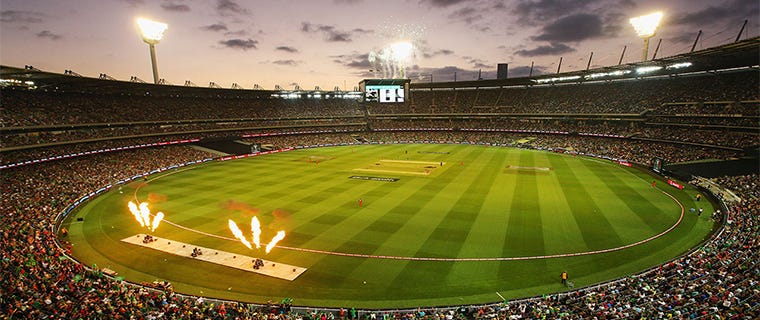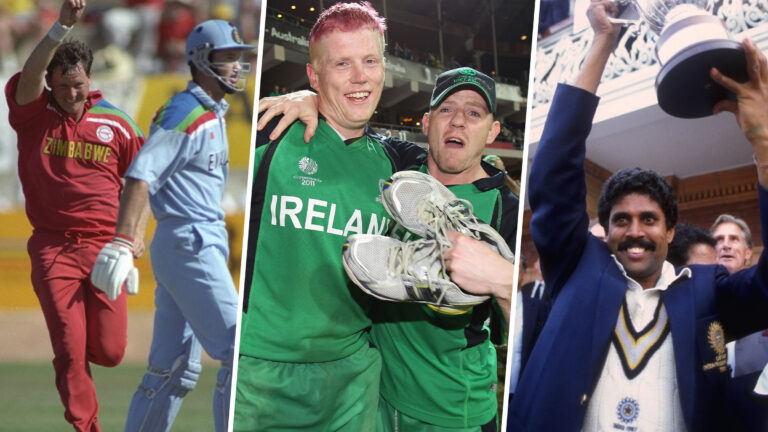
Cricket, often referred to as a gentleman’s game, is more than just a sport—it’s a rich tapestry woven through centuries of history, cultural evolution, and international competition. What began as a rustic pastime on English village greens has grown into a global phenomenon played and followed by millions around the world.
In this article, we explore the fascinating journey of cricket, from its humble origins in 16th-century England to its status as one of the most-watched sports today.
Origins: The 16th Century and Rural Roots
Cricket’s earliest known reference dates back to the late 1500s in south-east England, particularly in the counties of Kent, Sussex, and Surrey. It was initially a children’s game, often played in open fields and village greens using rudimentary equipment—a ball, a stick, and a tree stump or gate as a wicket.
By the early 17th century, cricket began gaining popularity among adults and started to attract interest from the gentry and nobility. It quickly spread beyond rural communities into schools, towns, and eventually the aristocracy.
The 18th Century: Formalization and Betting Culture
The 1700s were crucial in shaping cricket into an organized sport. Key developments during this era included:
- The formation of early cricket clubs, most notably the Hambledon Club, often regarded as the cradle of modern cricket.
- The introduction of written rules, including the basic structure of teams and standardized scoring.
- The rising culture of wagering, which brought large crowds and financial backing to the game.
In 1787, the Marylebone Cricket Club (MCC) was established and became the guardian of cricket’s laws—a role it continues to play today.
The 19th Century: The Age of Expansion
During the 1800s, cricket flourished across the British Empire. As the British expanded their colonial reach, cricket followed:
- India, Australia, the Caribbean, and South Africa began adopting the game.
- Test cricket was born in 1877, when England played Australia in Melbourne—the first official international cricket match.
- Cricket became a tool of both cultural integration and distinction across colonial societies.
Domestically in England, the establishment of county cricket and improvements in infrastructure such as railways helped formalize regional competitions.
The 20th Century: Globalization and Transformation
The 20th century witnessed rapid changes in both the structure and spirit of the game:
- The Imperial Cricket Conference, now known as the International Cricket Council (ICC), was founded in 1909 to oversee the sport globally.
- India (1932), West Indies (1928), and Pakistan (1952) joined the ranks of Test-playing nations.
- The One Day International (ODI) format was introduced in the 1970s, with the first Cricket World Cup held in 1975.
- The sport became increasingly commercialized, attracting corporate sponsorships, media coverage, and packed stadiums.
This era also saw cricket become more inclusive, with the rise of women’s cricket and increased grassroots participation.
The 21st Century: The T20 Revolution and Global Reach
In the 2000s, cricket saw a dramatic shift with the rise of the T20 format—a fast-paced version of the game designed for modern audiences. Key milestones include:
- The launch of domestic leagues such as the Indian Premier League (IPL), Big Bash League, and Pakistan Super League, which revolutionized player earnings and global fan engagement.
- The use of technology, such as the Decision Review System (DRS), live data analytics, and real-time streaming, transformed how fans experience the game.
- Afghanistan and Ireland became full Test nations, proving cricket’s growing global reach.
Today, cricket is played in over 100 countries and has passionate followings across Asia, Australasia, Africa, and parts of Europe.
Conclusion
From village greens in 16th-century England to the packed stadiums of Mumbai, Melbourne, and Lahore, cricket’s journey reflects a blend of tradition, innovation, and global unity. What started as a game of bat and ball played by shepherds has evolved into a multi-billion-dollar industry, uniting fans from vastly different cultures under a shared love for the game.
As cricket continues to grow—with Olympic inclusion on the horizon and digital expansion worldwide—its rich history serves as a reminder that even the most humble beginnings can lead to greatness.






